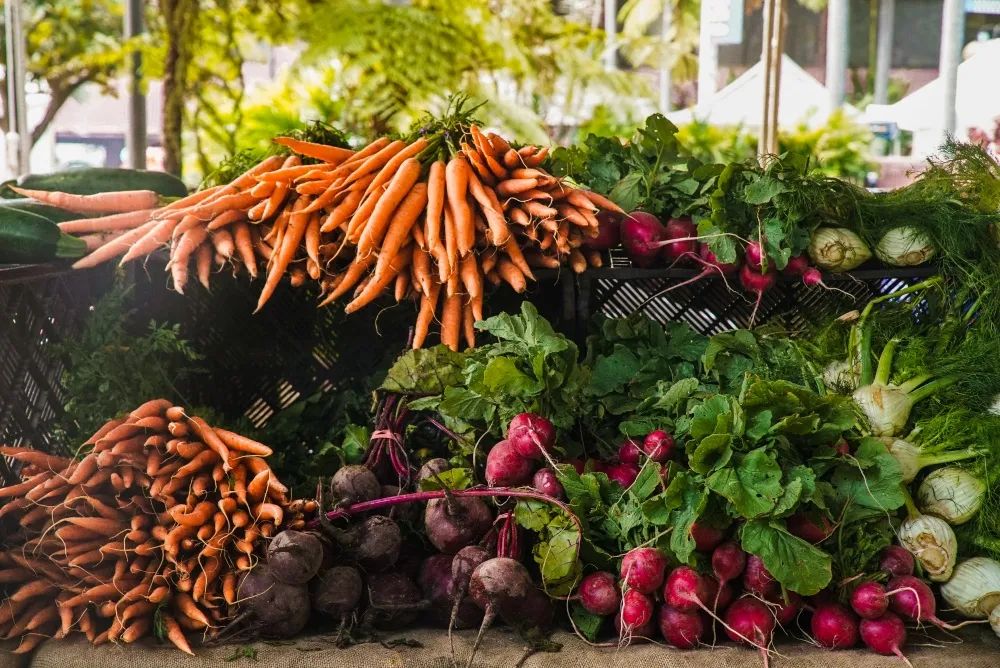
Farm to YOUR Table
July 2023
by anna rogers
How to get out of the farm-to-table pigeonhole while celebrating and enjoying locally-grown or -curated, well-raised food.
Farm to table, or farm to fork, isn’t a new term. Its roots stretch back to the '60s and '70s when people became increasingly dissatisfied with processed American food. In 1971, the first “farm to table” restaurant opened, and since then, it’s been a term used widely to describe restaurants that feature food grown and raised on local farms and ranches.
Like any trendy term, it has been overused and abused, with restaurants taking advantage of its allure and serving food that doesn’t embody the spirit of farm-to-table even a little bit under its guise. Unfortunately, overusing or misusing these buzzwords does an injustice to the people doing the real work to bring sustainable changes to how Americans eat. On top of that, an all-or-nothing approach (especially in a place like Montana) leaves people feeling frustrated when it comes to everyday meals that sustain their families.
How can we find the good in farm-to-table without pigeonholing ourselves? I believe that we can be genuinely guided by farm-to-table principles not just in the way we eat out but in the way we eat at home and that it can become a practical, sustainable, and… delicious lifestyle.
99 Problems…
America’s food systems are broken. Like every broken system, we can’t pinpoint one simple solution to cure it all. There is nuance in the form of culture, affordability, access, personal experience, climate in different areas, government involvement, and so much more. The pandemic exposed some pain points – supply chains and nearly monopolized industries like meatpacking. So many of us came back to the question, “How can we simplify the journey of our food from the farm where it grows to our tables?”
The question wasn’t one of snobbery but of security. People needed alternative sources for food outside of supermarkets. Shortages and price hikes left us feeling vulnerable. Knowing local growers and purchasing directly from them was an attractive alternative.
Still, questions linger about the viability of sourcing food locally. Some ingredients aren’t available locally – they don’t grow in this climate! Some foods aren’t available seasonally, creating the need to stock up (requiring freezer space) or preserve (requiring know-how and equipment). Local foods can be more expensive. Are there even enough farmers and ranchers in Montana to support us? And how do we get connected to these growers anyway?
… and Farm-to-Table Fixes Some.
Farm-to-table is not the gospel solution to all these problems, but implementing some of its tenets is a step in the right direction. Instead of getting too caught up in the politics and details, we can follow some guiding principles for the way we eat:
1. Eat real food. Overly processed food has a longer journey from the farm to your table than food closer to its natural state. Along the way, nutrients are lost, costs are incurred (including environmental costs like added transportation), and things are added. By eating real food, we shorten the journey from farm to table, even if it isn’t a direct one, all while nourishing our bodies with real ingredients that come from the earth and aren’t created in a factory.
2. Find local sources for foods you love. From grains to dairy, meats to vegetables, and fruit to flowers, Yellowstone Valley and Montana are home to many amazing farmers, ranchers, and crafters of goods. These growers are families and community members who have poured blood, sweat, and tears into their craft and find joy in bringing it to your table. Get to know some of them, ask about their practices, find some folks who are a good fit for you, and support them with your dollars.
3. Find places that carry local goods. Remember the problem of how to get connected to local growers? There are places around Billings that help make that connection easier for the consumer. Check out stores like Town & Country or Frae Everyday Goods, or look into the Yellowstone Valley Food Hub.
4. Adjust your menu to be a good fit. You’re not going to find a local source for avocados. That doesn’t make it a sin to eat avocados! But maybe you pair that avocado with some locally raised duck eggs or greens. Make apple crisp and pumpkin pie when the apples and pumpkins are available locally. Learn to use and love less-adored vegetables like garlic scapes and parsnips. Make the fresh, local ingredient the star of your dish. Use the bones of your meats and scraps of your vegetables to make broths for the winter.
5. Work together. Find a friend who’d like to share a bulk beef purchase. Trade your garden veggies for a friend’s eggs. Get involved in a community garden. Visit a restaurant that cares about sourcing locally when possible. There are different outlets for different passions and lifestyles. Find what fits you and your family and friends!
Set YOUR Table
It is too paralyzing and oversimplified to expect everything we eat to come directly from a farm into our kitchen and onto our plates. But we can enhance our meals by using fresher, local ingredients from our neighbors when it works. You won’t do it how I do it, I won’t do it how you do it, and that’s okay! Despite an exclusivist history, we can change the narrative around “farm-to-table” and bring it into our homes.
Free yourself from an all-or-nothing mentality. Instead, make small changes that matter. Cook what you love. Build relationships. Support your community. These are the collective choices that make significant impacts. This is the spirit of farm-to-table.
Originally printed in the July 2023 issue of Simply Local Magazine
Never miss an issue, check out SLM's digital editions here!





